Why are kids so seemingly magical to adults? What is it about those young, wild, expressions in photographs that makes us love them so much? It’s their honesty and unwavering outlook on life.
Kids show their emotions freely, and share their feelings with genuine truthful expressions that we love to see. Whether they are excited or frustrated, they are always being honest and letting their personalities shine as they push their limits of learning in any new experience.
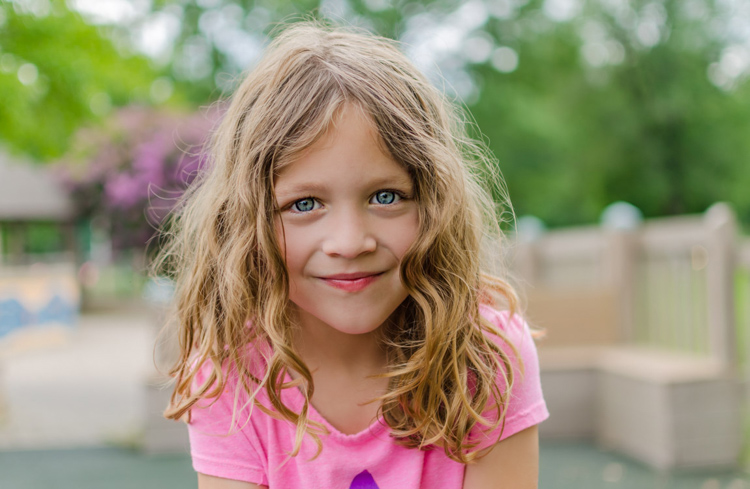
Though it’s something we witness in all children most the time, it is rare to capture a child’s magic in a photograph, the way we actually see it with our eyes. In this article you’ll learn about the psychological aspect of photographing children, with tips and tricks to show you how to create the perfect opportunities to capture those magical expressions and great personalities of kids.
Learn to Control the Scene
As with most photography, before you pick up the camera, become aware of what’s going on in your scene. When photographing children, it is important to know how much control you already have, or can possibly create.
Here are a few things to consider:
- Location: Are you outdoors or indoors?
- Limiting movement: Is the area confined to a single space with toys the child can play with?
- Allowing free movement: Are they running around in a big backyard with open space?
- Distractions: What in the environment could become a distraction or problematic?
- Get their attention: What can you use in this environment to help get the child’s attention?
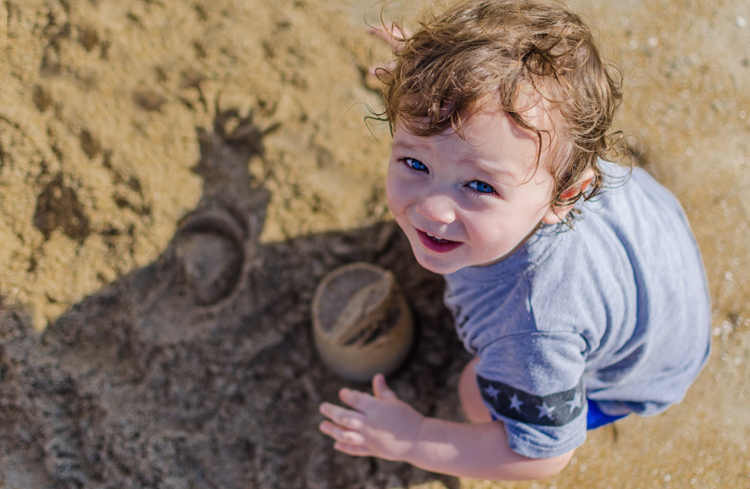
Many times you can capture children before they really notice, you if you plan it right. This gives you the chance to witness the way they act while they are in their own little worlds, with their big imaginations. Be careful not to let the camera become a distraction. If they see you photographing, you don’t always know what immediate reaction you are going to get.
Assess your scene, and start to plan ahead, by preparing for the way you will introduce yourself. First impressions are important. Kids attach to their first instinct all the time. Get down on their level to say hello. The next thing to keep in mind is that you want to force the control as little as possible. This means the more natural the scene is, the more genuine their expressions.
How is the child reacting to you?
- Do they acknowledge you?
- Are they playing with you?
- Are they playing on their own?
- Are they really hyper active, or are they quiet?
You want to engage with them by relating to them in the moment. Begin by mirroring their behaviour. If the child says hello and wants to play right away, then you’re ready for a game. Sometimes children will be shy or unsure at first. It may take a few minutes before they are willing to trust. This is normal, and it is actually a good thing. So act that way too.
The Best Secret to Photographing Kids
For the purpose of a photo shoot, during your entire interaction with the child, you want to pretend like you are playing a game. Whether it’s a game you make up, or one they already know, make it objective and give the game a winning goal. Be enthusiastic about playing with them.
A game is fun and engaging; it is also a great distraction. Decide what type of game is best for the moment. You can always change the game in a split second. This is good to keep in mind as kids tend to change their behaviour, and mood in a split second.
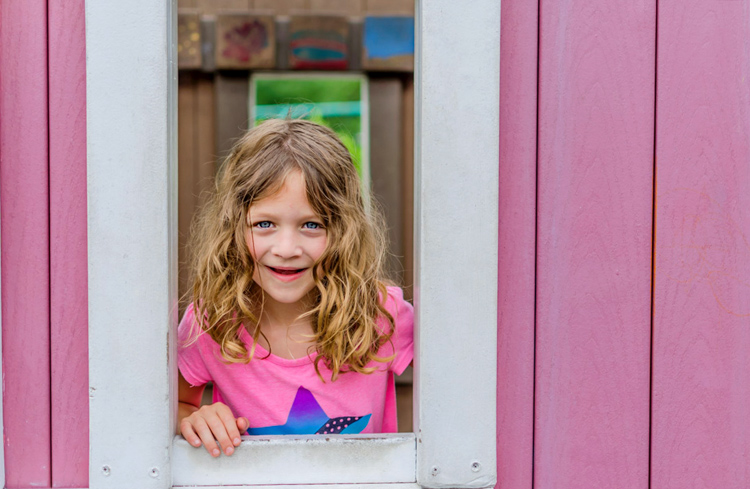
It is always a fun challenge to see how well you can create a specific scenario in a scene. When playing the game, give it a twist or a surprise, addition to working in a benefit for your photo shoot. For example, you may want to direct them towards more light. Depending on the positions you want the kid to be photographed in, you can add that direction as a command into the game.
With a game, the beauty of photographing children is knowing you are getting a wide range of expressions and emotions. Sometimes they will be pouty, grumpy or not listening. Other times they can absolutely surprise and amaze you. No matter what, the kid’s personality will shine, and you will be prepared to capture whatever spontaneous reaction they give.
Fun Games to Play
A ball. A single game of rolling or tossing the ball. Always in conversation with them and full of enthusiasm, say, “One… two… three!” and pass the ball as you say three. When you act, notice how they react. When the time is right and it is your turn, alter the moment by giving a small command.
Try asking them to sit a little to the left after a few rounds of tossing the ball, pointing to the spot where you want them to sit. See if they listen to the direction. Say, “Okay, now lets try sitting right there (point the the spot). Great job, are you ready? One… two… three!” Then toss the ball. Doing this will psychologically instill a listening pattern any time in the near future when you say, “Three!”.
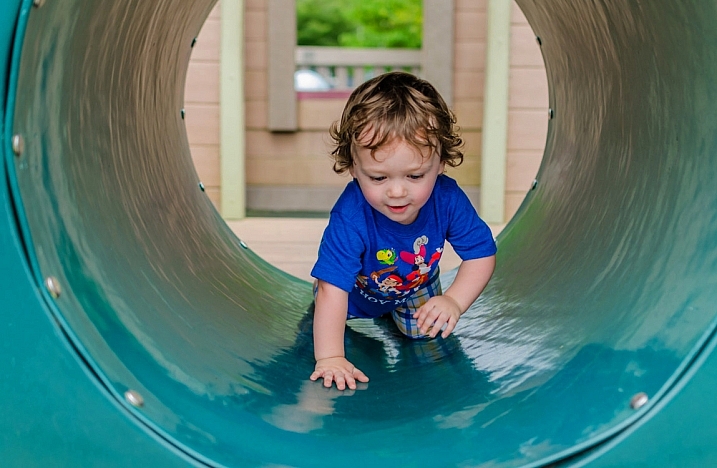
Keep using this method of adding in a twist to offer directions. Once you have them in the right place and pose, you can use the 1-2-3 method to grab their attention for the shots you want. When you get the ball, hold it at camera height and say it again. On three, snap the shot. Something always happens on Three!
Other Great Games
Simon Says: This works well with children four and up. Be animated with them as you participate. Make the moves simple and funny such as, “Simon says – pinch your nose”. Be ready for laughs with this one. Again, continue to test the waters and direct them with small commands during the game.
One toy at a time. If they have their own toys, or you give them ones to play with, let them choose whichever is most interesting to them. Make that toy seem like the coolest thing you’ve ever seen before. Turn it into a game. Use the method of 1-2,-3 in the game to prepare for the pause.

Use the camera as a story. It’s a magic camera. Make up a trick. Can you see my eye in this camera? What color is my eye? Is it purple? Be interesting and funny. Give them a reason to react to your words.
Create interest in your scene, and see how they react to what is going on. Point out something interesting around you. Find your point of excitement and go with it until they loose interest. No matter what game you choose to create in the moment, remember you are using it to take control of the situation as naturally as possible.
When all else fails, be a kid!
Ignore the camera to just play for a little while. Walk away and stop playing altogether. Remember you can mirror their actions. Act like them, and you will get a reaction that will make them relate and engage. Just play, don’t think about shooting for a few minutes. It’s all about engaging with their true personality to bring out the best in each kid.
Playing the first game for at least a minute or two before testing your chance to take a photo, is the best way to build trust with a child, especially if you’ve just met them. If you’re photographing your own children, or if the child is more stubborn and/or shy, it might take as long as 10 minutes of playing a game before they are comfortable, and being themselves, even if they are engaging with you.
Your goal is to be engaged without totally taking over the scene, just controlling the moments that are necessary to prepare for a natural expression to capture. You are building trust. Don’t loose patience. Take your time. It’s important to remember you are creating a simple game that allows you to gain control for just long enough (and in the right position) to snap the shutter.
No Games Needed

Sometimes the best games are the ones they make up. Always set guidelines for playing but let kids be kids. Ask them what they want to do. Remember to mirror their behaviour, body language, and expressions when you can. As you build that trust you create great photo opportunities for moments coming up.
Many times you don’t even need a game at all. If they are entertaining themselves, that gives you a unique opportunity to become more intimate, and allow their surroundings to just be as they are without needing control. Photograph around the kids without asking for their attention. Instead just have a conversation, or say nothing at all, and watch expressions change.
What expressions do you notice? Often the best ones are not necessarily big, joyful smiles. Look for the soft, serious expressions as you engage by asking questions.
Get your camera ready
Up until now we have discussed very little about the actual process of taking photographs. The above information is the most important part. Once you master patience and the technique of controlling the scene, you are guaranteeing yourself beautiful, and unique portraits of kids. But what’s equally as important, is your role as the photographer.
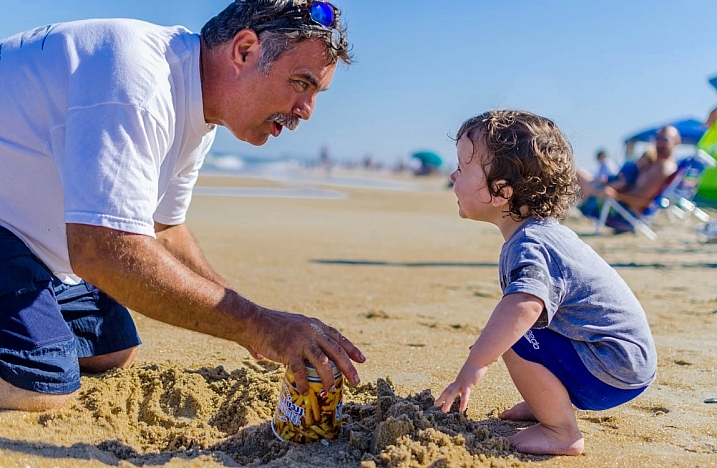
As the game is being played, you have the responsibility of making sure your camera is set, and you are in the right position capturing the right angle at any given moment. These tricks will help better prepare you for that role.
First thing is first. Camera settings must be accurate. If they aren’t on point, all those beautiful expressions disappear in the blink of an eye. Most of the time, the important camera setting when photographing children is aperture. The next most important aspect is always the light.
Try this:
Set your aperture between f/2.8 and f/4.5. This is a a very wide aperture which gives you a soft, shallow depth of field. This depth of field bring focus to the child while also allowing for more light to come in through the lens.
From there, choose your ISO based on the lighting conditions, and then find a shutter speed that balances the light to create a proper exposure. Remember, keep your ISO as low as possible to avoid noise, and choose a shutter speed as high as possible to freeze the movement of playful kids.
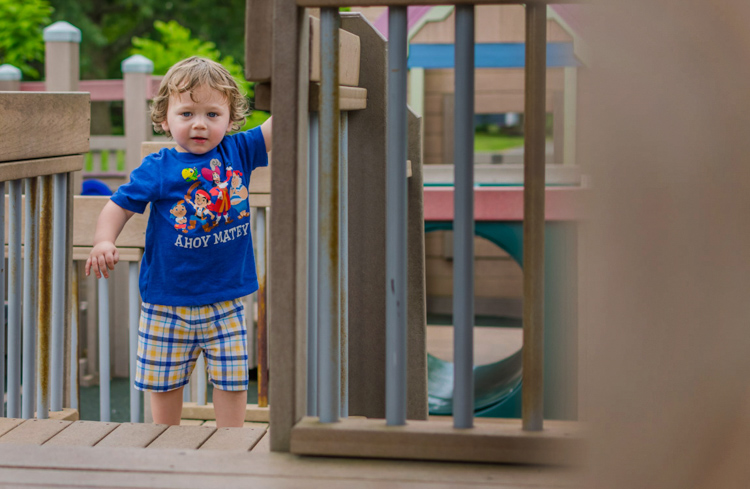
Once proper exposure is achieved, you shouldn’t have to change your settings unless your intention, or the light changes. For example, if you decide want to capture the movement of a scene, your camera settings may change.
Tried and Tested Tips
There are many simple things that you can control anywhere anytime even if you can’t control the kid in a photo shoot.
- Wear comfortable clothes. Clothes can get in the way when you’re trying to move around with a playful kid. Be prepared to move a lot. Wear clothes that you don’t care about getting dirty, and that have pockets to hide things.
- Think about the child’s size in relationship to you and the entire scene. Think about their relationship to what they are doing, or playing with. Use these elements to your advantage when shooting.
- Get down on their level and when possible, shoot up at them making them look bigger than life.
- Change your angles to create interesting view points that are unique to the scene, and incorporate more or less of the scene to add elements that accentuate the child’s size.
- Get in close. Zoom in, or walk close and capture their tiny features. When a child is distracted by a toy this is a perfect opportunity to get up-close and personal.
- Do your best to be the only one who is giving commands. Politely prepare the parents for not helping unless you ask for it. Then only ask for their help as a last ditch effort.
How Do You Stop “CHEESE!” ?
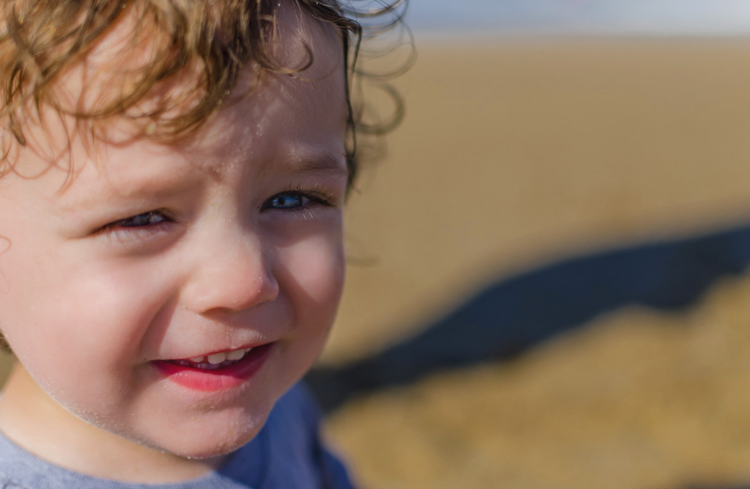
In the digital world we live in today, most kids are used to cameras, and many times they will create habits of specific, forced facial expressions, and fake poses that aren’t always so cute to capture. While smartphones and tablets are here to stay, so are the fearless kids who use them as a chance to over exaggerate, and get attention.
First, don’t acknowledge it as a bad thing. Don’t even mention it. Instead, change the game. Change the question. Change the whole topic. Give them something else to think about. When they do continue to over exaggerate, you can make it a game to not smile, then your challenge is to make them laugh, with your camera ready to go at a moment’s notice of course.
Be patient with them, and with yourself. Think like them. When they are upset, give them space. If they ignore you, ignore them. Stand back, capture them from afar as you slowly gain trust. All most kids ever want is a little attention. During a photo shoot, you are creating a special time when you can use these tried and tested tricks to give them just that, your undivided attention.
As you gain their trust by playing these games to naturally control the scene, you are creating the perfect scenario to capture real natural expressions, emotions and behaviours that we all love to witness in children. That’s how you capture their magic.

Kids are one of the most challenging, yet rewarding subjects, to photograph. I am always up for learning new techniques. Do you have any other great tips or tricks for photographing kids by engaging with them and bringing out their unique personalities and magical expressions?
googletag.cmd.push(function() {
tablet_slots.push( googletag.defineSlot( “/1005424/_dPSv4_tab-all-article-bottom_(300×250)”, [300, 250], “pb-ad-78623” ).addService( googletag.pubads() ) ); } );
googletag.cmd.push(function() {
mobile_slots.push( googletag.defineSlot( “/1005424/_dPSv4_mob-all-article-bottom_(300×250)”, [300, 250], “pb-ad-78158” ).addService( googletag.pubads() ) ); } );
The post Tried and Tested Tips for Photographing Kids by Danielle Werner appeared first on Digital Photography School.

Digital Photography School

























You must be logged in to post a comment.